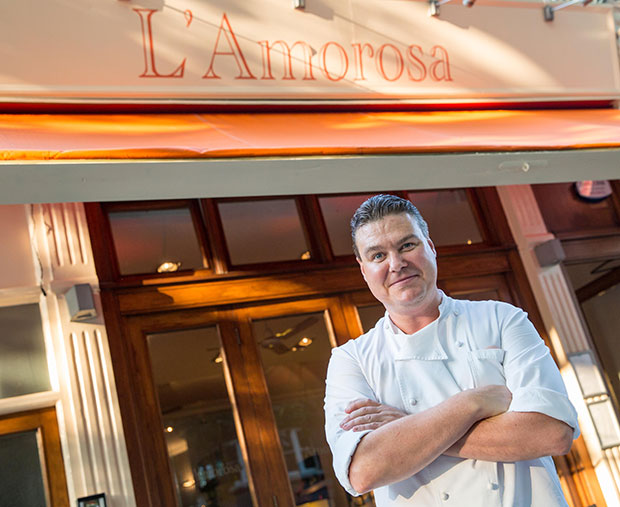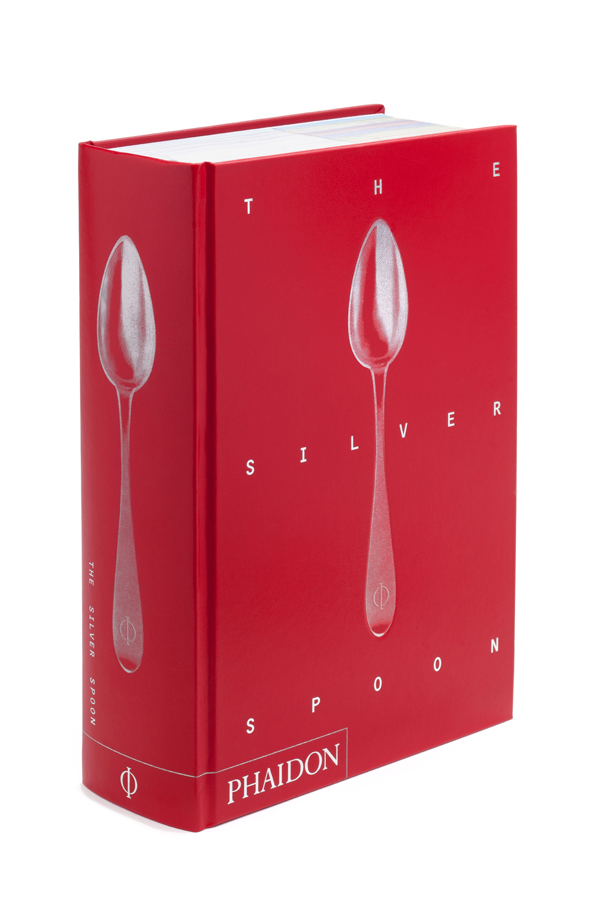
Silver Spoon Golden Memories - Andy Needham
As part of our Silver Spoon series the celebrated L'Amorosa chef tells us about his early fact finding days in Italy
“I have a copy myself. It’s a great book, an absolute classic. I work with many Italian chefs, I run restaurants in Italy. There are not many books that everybody knows about but most of my chefs know about The Silver Spoon. It’s a great repertoire of Italian cookery!”
As recommendations go they don’t come more glowing than Andy Needham’s description of The Silver Spoon, which celebrates the tenth anniversary of its publication in English this year. In common with the compilers of the original post WWII compendium of Italian cooking, Il Cucchiaio d’Argento, who criss crossed Italy harvesting home spun recipes, as a young man Needham set out on his own quest across Italy to discover the essence of Italian gastronomy.
He went on to work at Italy’s La Cinzianella restaurant, team up with Giorgio Locatelli and eventually take over the running of the incredibly successful Zafferano in London for 12 years before setting up the equally successful L’Amorosa. The FT’s How to Spend it has quite rightly pointed out that he’s “not Italian, but that he might as well be”. Along the way Needham has learned a few tricks or two, always employing Italian chefs and setting them 'the red sauce test' to check the quality of their cooking.
“I always think a simple pasta and red sauce dish is a true test of how strong a kitchen is and how strong a chef is," he tells us. A very fresh simple pasta with a good tomato sauce is very telling. Simplicity is the hardest thing to get right!”
“I believe in employing good chefs and learning from them too. When you employ great chefs they’re usually proud of where they come from and they usually show you little tricks they learned from their family!" Needham remembers facing a similar test, cooking for Giorgio Locatelli’s uncle, Alfredo, after arriving in Sardinia as a young man.
“I remember arriving by boat with a friend in May and seeing the night sky and the stars for the first time ever then waking up the next day and eating pasta with tomato sauce from a jar that had been preserved from the September harvest of the year before. It was extremely simple but there were layers upon layers of flavour: the olive oil, the good tomato, the salt and the herbs and the basil.
"I’d had a very classic French training – three years apprenticeship at the Savoy which had been very rigid and then on to Paris and high Michelin starred food. The first person I would have cooked for in Sardinia would have been Giorgio’s uncle, Alfredo. I don’t think he was that impressed to be honest! But he wasn’t impressed with anything! He certainly never let anyone know they were that good – it was that kind of kitchen. But I ended up working for him."

Here are three tips from Andy, followed by his red sauce recipe.
If you use tinned tomatoes take away acidity by adding a pinch of sugar or use white, sweeter onions. Use a little bit of garlic to infuse the oil then remove it. It’s a good way of introducing garlic into a sauce without overpowering it.Taggiasca olives from Liguria give just a little bit more olive flavour to the olive oil.
Salsa Rossa – Red Sauce
This sauce is a base for many dishes of the classical Italian cookery. It is also sometimes called ‘Passata ‘which means ‘passed‘ roughly translated, which refers to the passing through a vegetable mouli to remove all of the skin and seeds from the tomato to leave the pulp. Again, traditionally this is a way of preserving the plum tomatoes when they are in abundance at the end of summer. At other times of the year the following recipe is how we prepare it at L’Amorosa
1 kg tomato pulp or chopped tomato, 1 thinly sliced white onion, 2 whole olives (taggiasche), 2 whole peeled cloves of garlic, Olive oil, 20 ml, Pinch of sugar, Pinch of salt, 20 leafs of basil on the stalk
Method
I use a stainless steel pan with a lid to start the process and end.Heat the olive oil and garlic in the pan until the garlic starts to fry until golden colour,then remove the garlic. Add the onion and olives and slowly soften the onion without colour, this should take 5 minutes on a low heat with the lid All of the above is to add some flavor to the olive oil that will in turn add flavor to the finish sauce. Next, add the tomato pulp, season with the salt and sugar. If you are using tinned plum tomato then only use the tomato not the juice (as this can be very acidic), in this case add a little water to replace. Cook the sauce on a gently simmer without the lid for 20-30 minutes (depending on the quality of the tomato pulp), 30 minutes for the tinned plum tomato. Finally remove the pan from the heat and add the basil leafs and stalks to infuse into the sauce for 10 minutes, at this stage replace the lid to the pan to help the infusion. Finally remove the basil and olives, the pass everything through the mouli The mouli helps to pass all the ingredients into a smooth sauce and keep the red color. A blender would be too fast and the olive oil and tomato would blend together to give a lighter colour. Season to taste. This should give around 1 litre of sauce, approx 10 servings.
Make Pasta al Pomodoro and share your pictures with us. Tag @phaidonsnaps and #mysilverspoon #phaidon
You can download the recipe for Pasta al Pomodoro If yoiu're in London make a booking for L’Amorosa here.